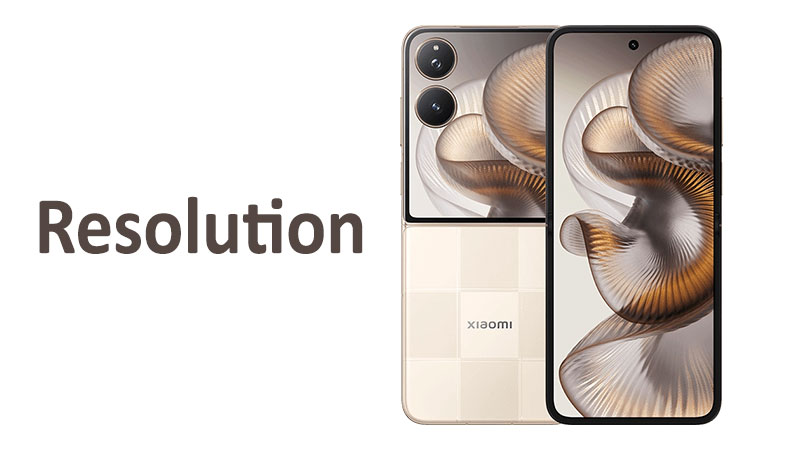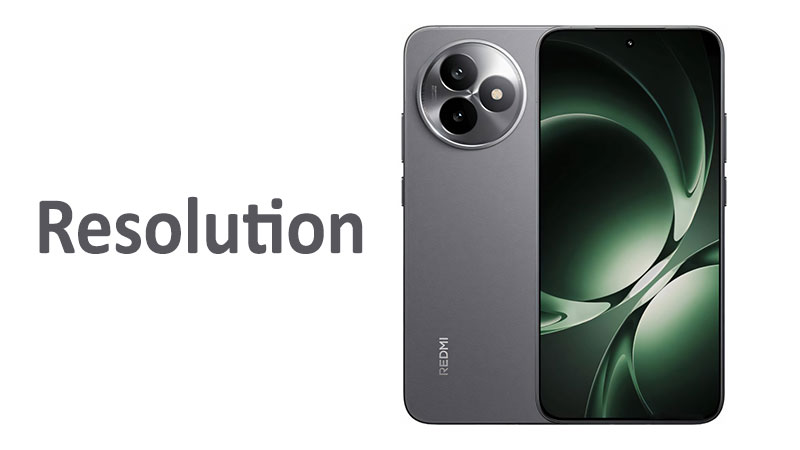The display is one of the most critical components of any modern smartphone. It is the primary interface for all your daily tasks, from browsing the web to watching movies. A high-quality display is essential for a premium user experience. This is especially true for the Nothing Phone 3, a device that emphasizes unique design and a minimalist aesthetic. In this comprehensive article, we will explore every aspect of the Nothing Phone 3 display, including its resolution, key specifications, and features. We will also compare it to its predecessors and competitors to help you understand what sets it apart.
Nothing Phone 3 Display: The Core Technology and Specifications
The Nothing Phone 3 is equipped with a state-of-the-art AMOLED display. This technology is known for its vibrant colors, true blacks, and exceptional contrast. The Nothing Phone 3’s screen size measures 6.67 inches diagonally. This provides a generous canvas for all your content.
The resolution is a standout feature. It comes in at 1260 x 2800 pixels. This is often referred to as a “1.5K” resolution. It offers a significant upgrade in sharpness compared to standard Full HD+ displays. The pixel density is approximately 460 ppi. This ensures that text and images are incredibly crisp and clear. You won’t be able to discern individual pixels with the naked eye.
The display also supports a wide color gamut with 1 billion colors. This results in rich, lifelike color reproduction. The color accuracy is excellent, making it ideal for photo editing and media consumption. It also supports HDR10+. This standard allows for a wider range of brightness and colors in compatible content.
High Refresh Rate and Brightness
The Nothing Phone 3 display features a 120Hz refresh rate. This enables incredibly smooth scrolling, fluid animations, and a more responsive feel. This high refresh rate makes a noticeable difference in everyday use. It is a major upgrade from phones with a 60Hz refresh rate.
The display’s brightness is another impressive specification. It boasts a peak brightness of 4500 nits. This is a crucial feature for outdoor visibility. Even under direct sunlight, the screen remains clear and readable. In a more typical setting, the manual maximum brightness is around 756 nits. The automatic maximum brightness reaches a very respectable 1507 nits. These brightness levels are more than sufficient for comfortable use in any lighting condition.
Eye Comfort and Protection
The Nothing Phone 3 also incorporates advanced features for user comfort. It has a high-frequency 2160Hz PWM dimming. This technology reduces screen flickering at low brightness levels. This is a significant benefit for users who are sensitive to flicker. It can help prevent eye strain and fatigue during long periods of use.
For durability, the display is protected by Corning Gorilla Glass 7i. This is a robust form of glass designed to resist scratches and drops. It provides a good level of protection against daily wear and tear. This is an important consideration for a device you’ll carry everywhere.
Display Comparison: Nothing Phone 3 vs. Nothing Phone 2 and Competitors
The Nothing Phone 3 display represents a substantial leap forward from its predecessor, the Nothing Phone 2. While both phones feature a 120Hz AMOLED display, the Phone 3 improves in several key areas.
The most noticeable upgrade is the resolution. The Nothing Phone 2 had a Full HD+ resolution of 1080 x 2412 pixels. The Nothing Phone 3 elevates this to 1260 x 2800 pixels. This results in a higher pixel density and a sharper image.
Brightness is another major improvement. The Nothing Phone 2 had a peak brightness of 1600 nits. The Nothing Phone 3 more than doubles this to an incredible 4500 nits. This makes the Phone 3 display significantly more visible outdoors.
The Nothing Phone 2 featured an LTPO display, which allowed it to dynamically adjust the refresh rate from 1Hz to 120Hz. The Nothing Phone 3 uses an LTPS panel, which is not as efficient. Its refresh rate can only drop to 60Hz. While this is a minor step back in terms of power efficiency for static content, the overall viewing experience remains top-tier.
Compared to its competitors, the Nothing Phone 3 holds its own. Its resolution and brightness levels are on par with or exceed many flagship devices. The 1.5K resolution strikes a good balance between sharpness and power consumption. While some rivals may offer higher refresh rate scaling (down to 1Hz), the Nothing Phone 3’s 120Hz experience is still exceptionally smooth. The high PWM dimming frequency is a pro for those who are sensitive to screen flicker.
Pros and Cons of the Nothing Phone 3 Display
Pros:
- High Resolution: The 1260 x 2800 pixel resolution provides a very sharp and detailed viewing experience.
- Exceptional Brightness: With a peak brightness of 4500 nits, the display is easily readable in bright sunlight.
- Smooth 120Hz Refresh Rate: Scrolling and animations are incredibly fluid, enhancing the user interface.
- AMOLED Technology: Delivers true blacks and vibrant, accurate colors for media consumption.
- High PWM Dimming: The 2160Hz PWM dimming reduces eye strain and makes the screen more comfortable to use at night.
- Gorilla Glass 7i Protection: Offers robust durability against scratches and minor drops.
Cons:
- No LTPO: The display’s inability to scale the refresh rate below 60Hz is a minor downgrade from its predecessor. This can have a slight impact on battery life.
- Lack of Dolby Vision: While it supports HDR10+, the absence of Dolby Vision might be a drawback for some movie enthusiasts.
Important Points for Buyers
For those considering the Nothing Phone 3, the display is a major selling point. Its 1.5K resolution is a significant step up from the typical Full HD+ screens in this price range. The peak brightness of 4500 nits is also a class-leading feature. This makes the phone perfect for outdoor use.
The 120Hz refresh rate ensures a premium, high-end feel. The high-frequency PWM dimming is a notable advantage for users who spend a lot of time on their phones. It prioritizes eye comfort, which is a feature often overlooked by other manufacturers.
The lack of LTPO technology is a minor point to consider. However, the impact on battery life is not significant enough to be a deal-breaker for most users. The overall display experience is fluid and visually stunning. The Corning Gorilla Glass 7i provides good peace of mind against accidental damage. Overall, the Nothing Phone 3 display offers a fantastic blend of high-end specs and practical features.
Conclusion
The Nothing Phone (3) display is a clear highlight of the device. It combines an upgraded 1.5K resolution with a dazzling 4500-nit peak brightness. The 120Hz refresh rate and AMOLED panel ensure a premium, visually stunning experience. While it forgoes the LTPO technology found in its predecessor, the high-frequency PWM dimming is a welcome addition for eye comfort. Protected by Corning Gorilla Glass 7i, the screen is both beautiful and durable. For anyone seeking a phone with an excellent, vibrant, and incredibly bright display, the Nothing Phone 3 is a top contender. It delivers on all fronts and provides a user experience that is both refined and unique.
FAQ
The Nothing Phone 3 has a resolution of 1260 x 2800 pixels. This is a step up from the standard Full HD+ resolution.
The Nothing Phone 3 utilizes a 10-bit Flexible AMOLED display, known for its vibrant colors, deep blacks, and excellent contrast.
Yes, it features a 120Hz refresh rate. This makes the screen feel very smooth and responsive during use.
The display has an impressive peak brightness of 4500 nits. This makes it highly visible even in direct sunlight.
The screen is protected by Corning Gorilla Glass 7i. This provides strong resistance against scratches and accidental drops.
The Nothing Phone 3 has a higher resolution and a much brighter display. However, unlike the Phone 2, it does not feature LTPO technology.



